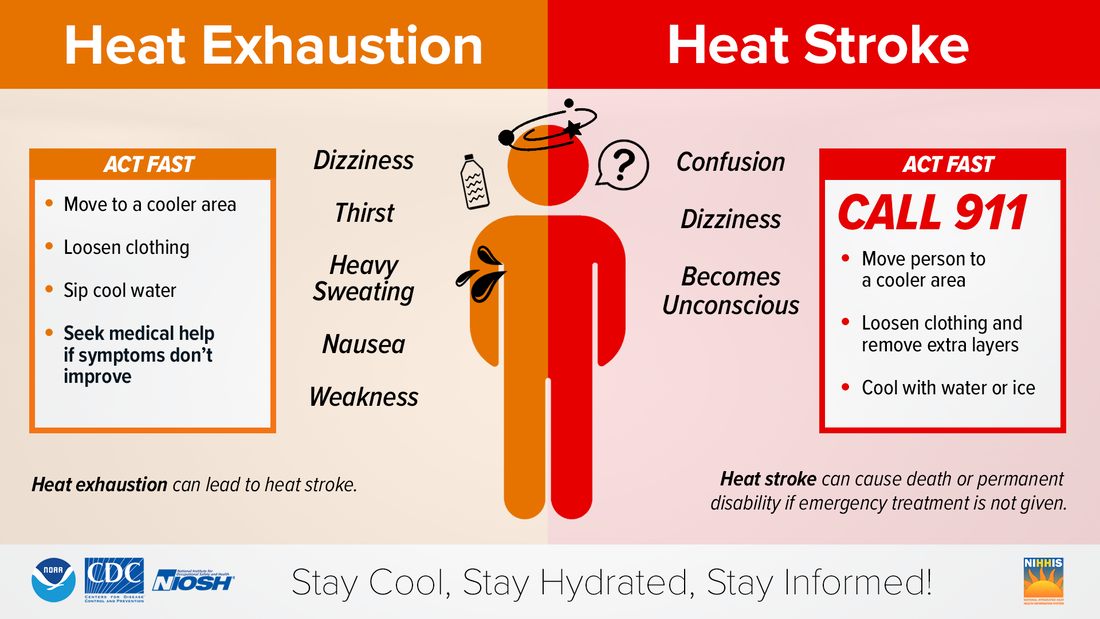|
Image source: National Weather Service In steel construction, exposure to high temperatures is common. As we head into the summer months, it’s critical to address the heat stress and the signs of heat related illnesses to ensure the safety and well-being of workers. Recognizing the significance of this issue, the American National Standards Institute (ANSI) and the American Society of Safety Professionals (ASSP) introduced the ANSI/ASSP A10.50-2024 standard. Released on February 26, 2024, this standard provides tips and guidelines for effectively managing heat stress. By understanding and implementing these guidelines, employers and workers in steel construction can mitigate the risks associated with heat-related illnesses and create safer working environments. Here's a breakdown of key elements from this new standard.
Heat Stress Management Program: The standard mandates the implementation of a comprehensive Heat Stress Management Program, encompassing various aspects such as acclimatization methods, hydration strategies, emergency action plans, rest breaks, shaded areas for rest, engineering controls, monitoring systems, employee participation, training, and program review. OSHA Standards: While Federal OSHA currently lacks specific regulations concerning heat illness and exposure, several states, including California, Colorado, Minnesota, Oregon, and Washington, have established their own standards in this regard. Best Practices for Heat Stress Prevention
Symptoms include heavy sweating, cold and clammy skin, fast weak pulse, nausea or vomiting, muscle cramps, tiredness or weakness, dizziness, headache, and fainting. First Aid Measures Move the affected worker to a cooler area and initiate active cooling techniques such as removing outer layers of clothing, immersing in cold water or ice baths, applying cold wet towels, and using fans to circulate air. Never leave a worker alone with heat-related illness and continue cooling techniques until emergency medical services arrive. Resources: OSHA WBGT Calculator Heat Illness Prevention- Employer Responsibilities, OSHA Heat Illness Prevention- Information for Workers, OSHA National Weather Service Map Regional Map This Safety Flash was contributed by Jason Farris, Executive Vice President of Safety Compliance for Cooper Steel, in cooperation with SEAA’s Safety & Education Committee. It’s designed to keep members informed about ongoing safety issues and to provide suggestions for reducing risk. Best practices are gathered from a variety of sources. They may be more or less stringent than individual corporate policies and are not intended to be an official recommendation from SEAA. Always get approval and direction from your company officers on any new practice or procedure as these best practices may not work for all situations. Everyone benefits when a worker avoids injury. Submit your ideas for Safety Flash to [email protected]. Comments are closed.
|



 RSS Feed
RSS Feed
